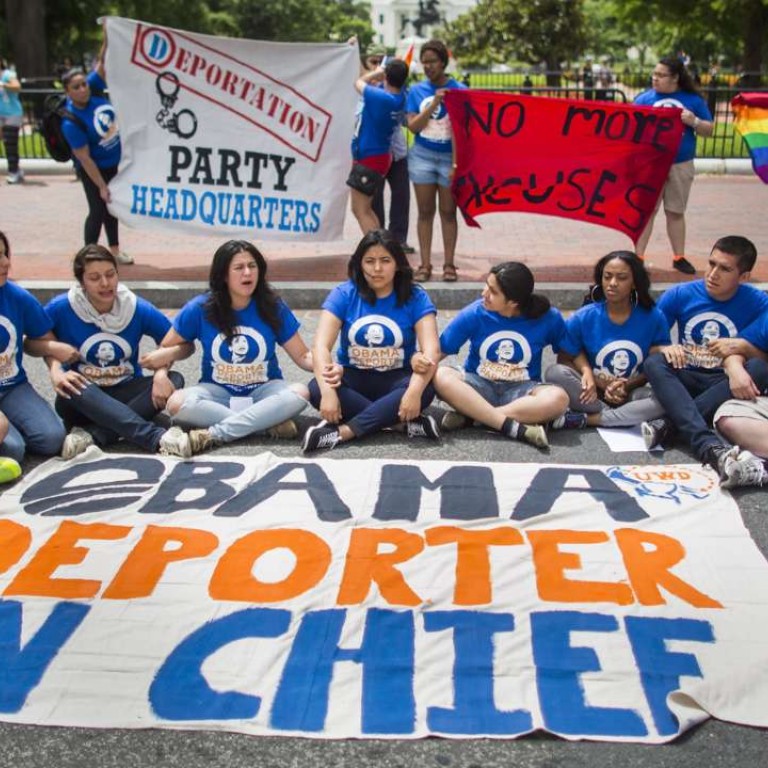
Race and identity now the central dividing line in American politics, not economics
And internal divisions within each of the main parties also makes it difficult for either to successfully mount any economic policy without the cooperation of the other
As the surreal train wreck that is the 2016 US presidential election campaign unfolds, the obvious question is, how did the Republican Party wind up with Donald Trump as its nominee?
Trump’s campaign platform draws from a history of presidential aspirants focused on populist immigration and international trade policies. In 1992 and 1996, Pat Buchanan sought the Republican presidential nomination on immigration and Ross Perot ran as an independent candidate on trade.
Trump himself first ran in 2000 against Buchanan and bowed out in the face of certain defeat. Interestingly, he repeatedly accused Buchanan of racism, calling him a “neo-Nazi” and “Hitler lover” for bashing blacks, Mexicans and gays.
In the current election cycle, Trump has retained Perot’s anti-trade and anti-elitist messages but added Buchanan’s warnings of losing the country to ethnic and religious minorities.
Race and identity are now the central dividing line in American politics, not economics (despite some strong trade and China-bashing rhetoric). Though race has always lived close to the surface of American politics, it has rarely featured so explicitly in political campaigns. So how did this happen?
Trump is not acting in a vacuum. His identity-based nomination is the logical culmination of Republicans’ 50-year “Southern strategy” to define politics primarily by race and identity instead of economics. This was a winning strategy first tried by Richard Nixon in 1972 and with greater success by Ronald Reagan in 1980.
For Republicans, the irony is that this strategy has reached its full maturation with Trump at precisely the moment when it is no longer a winner because American demography is shifting in favour of ethnic minorities.
In a two-party system, there can only be one principal dividing conflict at any given time. Throughout most of American history, this has wavered between two main divisions: economic policy (essentially: more or less government intervention in the economy) and social and cultural identity issues.
Mass opinion surveys show that the beliefs of most people on these two issues tend to be poorly correlated. Most voters are not ideologues. Their views on government regulation of business will tell you very little about, say, their views on abortion.

From 1800 to 1856, economic policy defined the primary dividing conflict. The Democratic programme of agrarian expansionism won almost every presidential election except in 1840, because the nation was mostly farmers.
From 1860 to 1928, the Republican economic programme of commercial and industrial development won every time.
The path leading to Trump began in 1932, when Democrats formed a majority coalition of Northern liberals and Southern conservatives and defined the divide in economic terms, focused on the Great Depression and Roosevelt’s New Deal.
However, with the civil rights constitutional amendments in 1966, the division shifted to race. There was a backlash by Southern white Democratic conservatives and Northern working-class whites, who viewed the amendments as an agenda of Northern liberals.
Many former Democrats fled to the Republican Party. And with that, the Democrats effectively lost their winning political majority.
Beneath the shifting majorities was a significant cross-party swapping of voters. Republicans absorbed non-college educated, culturally conservative white voters, many from rural or declining urban areas, who had been the core of New Deal supporters. The Democrats absorbed culturally liberal wealthy professionals, largely in prosperous urban and suburban areas, many of whom had once opposed many elements of the New Deal.
Trump is not acting in a vacuum. His identity-based nomination is the logical culmination of Republicans’ 50-year ‘Southern strategy’ to define politics primarily by race and identity instead of economics
Today, the Republican Party includes economic non-interventionists and cultural conservatives who often have little in common other than feeling they do not belong to the Democratic Party.
Moreover, the Republican elites who envisage “limited government” have become a minority within their party, against the conservative working class whites.
Democrats are increasingly confident they can win national elections with the “Obama coalition” of racial minorities and white liberals. They now have fewer reasons to moderate their views on racial and social issues, which further convinces socially conservative whites that their country is being taken from them.
Interestingly, the economic divide within both parties has also widened. There is now open warfare in the Republican Party between Trump supporters and NeverTrumpers. Democrats are less divided, but internal rifts between Hillary Clinton and Bernie Sanders mirror an “establishment” versus “insurgent” conflict that is likely long lasting.
This makes it difficult for either party to successfully mount any economic policy without the cooperation of the other party. One cannot be optimistic that there is space left for cross-partisan cooperation.
Race and identity will remain the dividing line in American politics for a while to come. The Democrats see it as a winning strategy. And the Republicans will not be able to ignore the majority voices that Trump has released from Pandora’s box.

